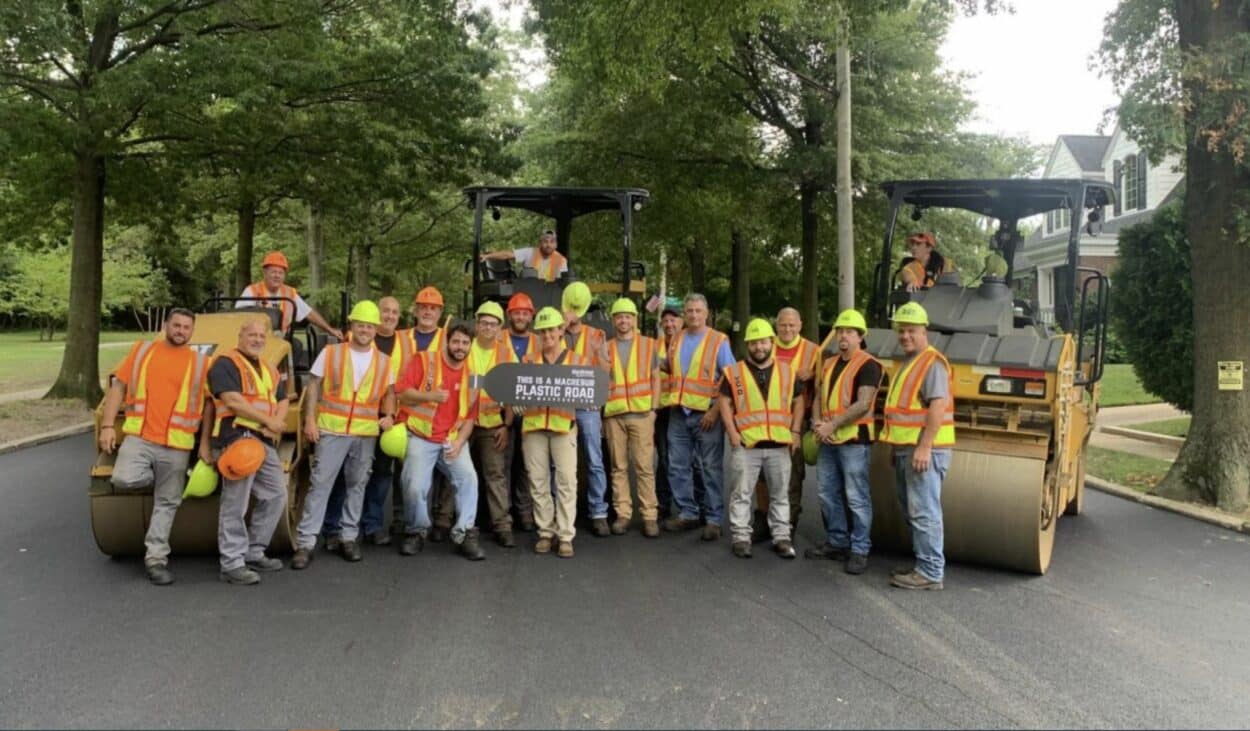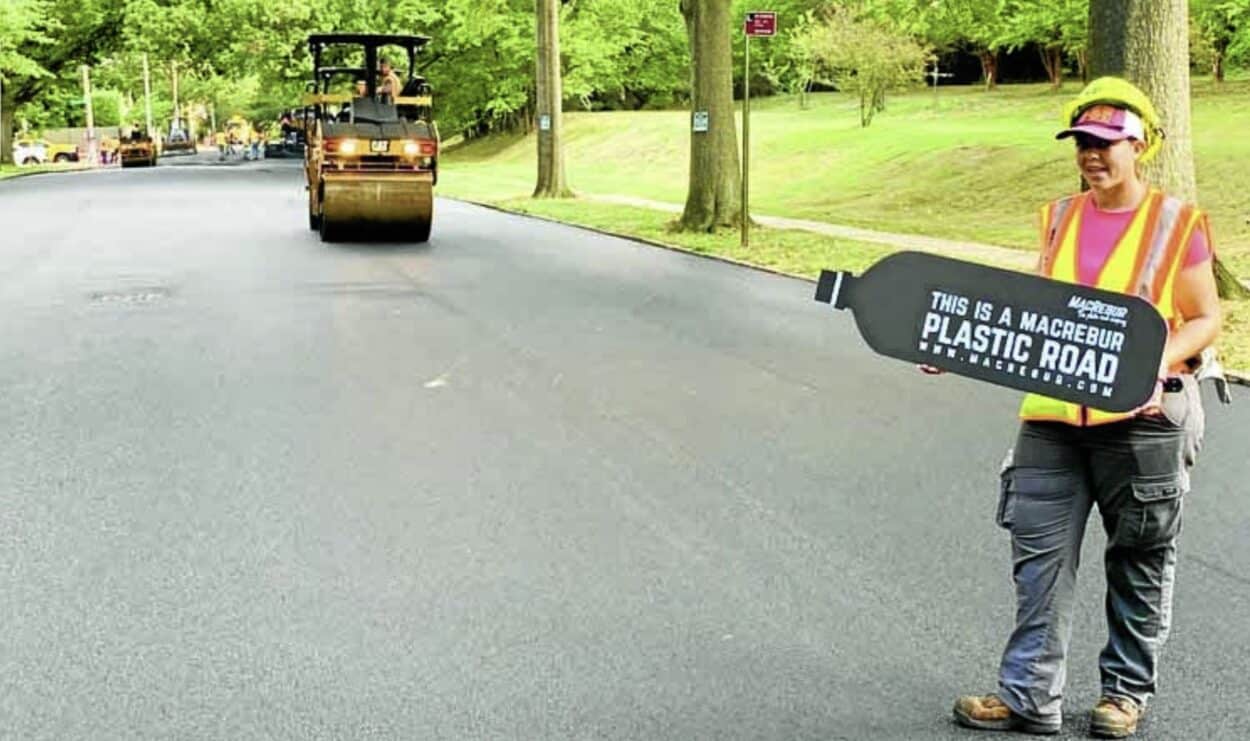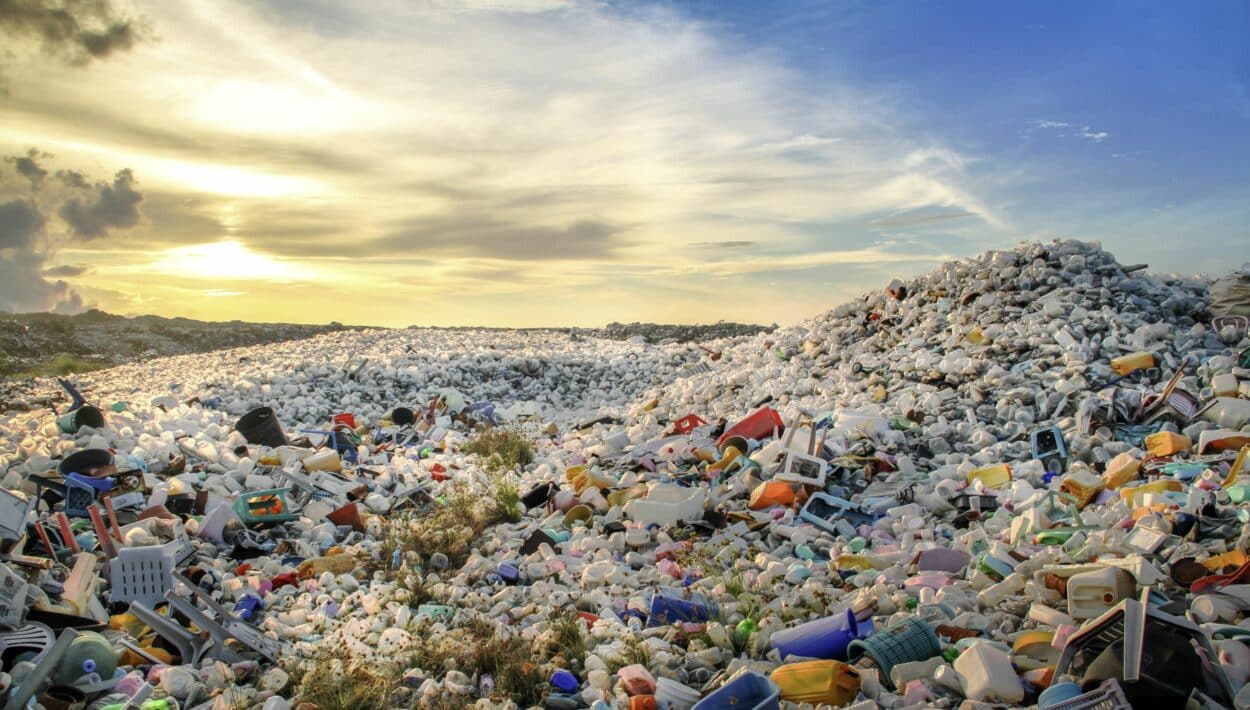Across the world, plastic waste is being incorporated into highways on a growing scale. While plastic roads made their debut in India in 2001, other countries have recently paved their first plastic roads.
Plastic waste is a scourge on our planet. It pollutes almost every environment – from the tallest mountains to the deepest ocean trenches – and is harmful to both humans and wildlife. Annual global plastic production has doubled since the beginning of the century, to more than 400 million tonnes in 2022, while more than 6 billion tonnes of plastic waste has now accumulated across the world.
While reducing the amount of new plastic we produce is imperative, the number of methods being employed to repurpose and transform existing plastic waste is also diversifying from dissolving and incinerating it right through to the application of plastic-eating bacteria and fungi. Over the last two decades, underpinned by technology developed in India, an ingenious new solution to the plastic waste challenge has also started to take off. The so-called “plastic road“. In 2017, the government mandated that new roads in India should incorporate plastic due to the successful results analyzed from fifteen years of experiments.
The Road to Innovation: Repurposed Plastic as Bitumen Replacement
Every day, on an expressway that runs into the heart of the Indian capital New Delhi, a never-ending stream of vehicles speeds over huge quantities of plastic bags, bottles and cups. In a single kilometre, every car and truck passes around a tonne of plastic waste. But far from offering an unappealing drive through an ocean of trash, the road in question is pancake-flat, clean, and well-maintained. The plastic that each driver unknowingly travels over is invisible. It is simply a part of the road itself.
The road, which connects New Delhi to the nearby city of Meerut, was built using a pioneering system developed by Dr. Rajagopalan Vasudevan, a professor of chemistry at the Thiagarajar College of Engineering in the Indian city of Madurai. It replaces around 10% of the bitumen normally found in a conventional road – which is used to hold together the sand and aggregate in asphalt – with repurposed plastic waste.
“Back in 2000 I was watching the television and a very famous doctor was being interviewed,” explains Dr. Vasudevan. “In the interview, the doctor was talking about how plastics dissolve in water, and how this has a negative impact on every living creature that drinks it. I found this annoying since I am a chemistry professor and know some things about polymers and their properties (conventional plastics aren’t water-soluble).”
“I also knew that plastic was important to low-income Indian families and that better management could improve the situation of plastic waste in the environment, without the need to stop plastic production. This was the lightbulb moment that eventually led me to the plastic road.”
Benefits of Plastic-bitumen Composite Roads
Dr. Vasudevan began a series of experiments to identify effective plastic disposal techniques. In a molten condition, he found that plastic had the property of an excellent binder. This brought to mind another chemical of a similar nature: bitumen, a black tarry substance produced from crude oil.
“When plastics are heated to between 1200°C and 1500°C they melt,” he explains. “I found that aggregate could be covered with molten plastic at around 150°C. The coating helped to bind the stone with the bitumen because both plastic and bitumen are petroleum products.”
Today, Vasudevan’s patented process involves mixing shredded plastic with hot gravel and adding it to molten asphalt. While a conventional road requires around 10 tonnes of bitumen for each kilometre, a plastic road only uses nine tonnes of bitumen and one tonne of waste plastic. This offers an array of benefits.
“Compared to incineration or landfilling, using plastic waste in roads is an effective and pollution-free way of disposal,” says Dr. Vasudevan. “A wide range of plastics can be used – even those that are not recyclable, such as multi-layered, laminated plastics. Using plastics in roads also decreases the amount of bitumen and asphalt being used, which has economic and environmental benefits.
“Last but not least, plastic-bitumen composite roads have better wear resistance than standard asphalt concrete roads. They do not absorb water, and have better flexibility, which results in less rutting, less need for repair, and roads that are better to drive on.”


The International Growth of Plastic Roads: Saving Three Tons of Carbon Dioxide per Kilometer
Across India, cities such as Chennai, Pune, and Jamshedpur have started to lay down plastic roads, which now run for more than 150,000 kilometres. The Indian Ministry of Roads has set a target of 15,000 kilometres of new plastic roads every year. According to Dr. Vasudevan’s calculations, incorporating waste plastic into roads saves three tonnes of carbon dioxide for every kilometre of road laid, which means the climate change benefits alone are significant.
Plastic road technology, meanwhile, is gaining ground in the United Kingdom, Europe, and Asia. Several countries including South Africa, Vietnam, Mexico, the Philippines, and the United States have only recently built their first plastic roads.
Toby McCartney is the founder and CEO of MacRebur, which has already paved thousands of kilometres of roads in the UK with asphalt containing plastic waste. The British company partnered with the New York City Department of Transportation to give New York its first plastic road late last year.
“We now have a variety of different machinery capable of producing various volumes of plastic asphalt, tailored to the needs of the end customer – whether that be somewhere like Bermuda, which would require a relatively small annual volume, or Florida, which would need a lot more,” says McCartney.
“To allow us to scale up we’ve built our own laboratories to carry out autonomous testing, and have plans to build our own manufacturing plants in strategic locations across the world. Every single member of the MacRebur team is dedicated to helping end the plastic epidemic.”











